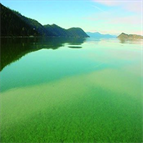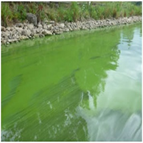Find methods for your needs
Refine by Feature
Displaying 1-2 of 2 results for Tag: Cyanobacteria
Identification and Quantitation of Microcystins by Targeted Full-Scan LC-MS/MS
Instrument Type: LCMSMSCyanobacteria, commonly referred to as blue-green algae, are photosynthetic prokaryotes that occur naturally in surface waters. They contribute significantly to primary production and nutrient cycling. Blooms of toxic cyanobacteria species in surface drinking water sources and recreational waters threaten human health. Gastrointestinal illness, skin irritation, and death following renal dialysis have been attributed to acute cyanotoxin exposure. We describe a simple and sensitive LC-MS method for definitive identification and quantitation of microcystins in water.
Fast and Accurate Determination of Algal Toxins in Water Using Online Preconcentration and UHPLC-Orbitrap Mass Spectrometry
Instrument Type: LCMSMSWhen the density of the colonies of Microcystis and Nodularia cyanobacteria surpass a certain level, they produce hepatotoxic substances called microcystins and nodularins, respectively,2 while Anabaena and Apha-zinomenon are known to produce a neurotoxin called anatoxin. We describe a column-switching technique based on online preconcentration and high-resolution, full-scan Thermo Scientific™ Orbitrap™ mass spectrometry to obtain fast and accurate results for the determination of algal toxins in drinking water.


